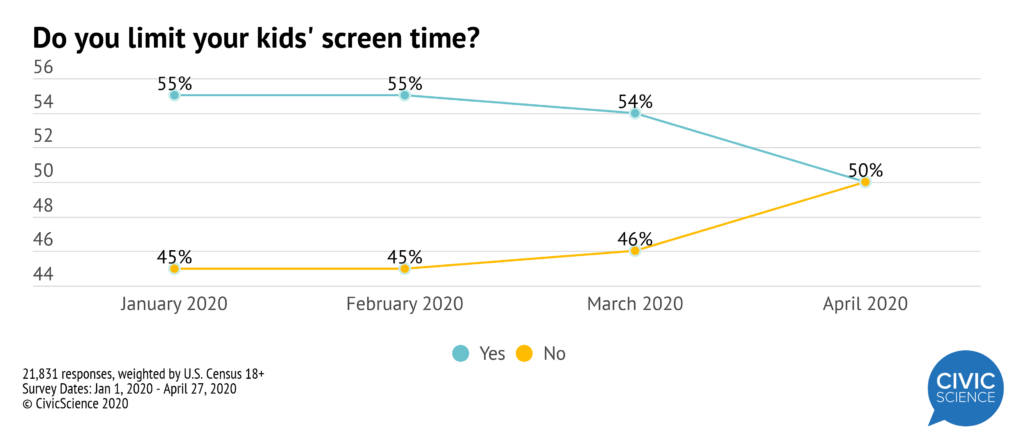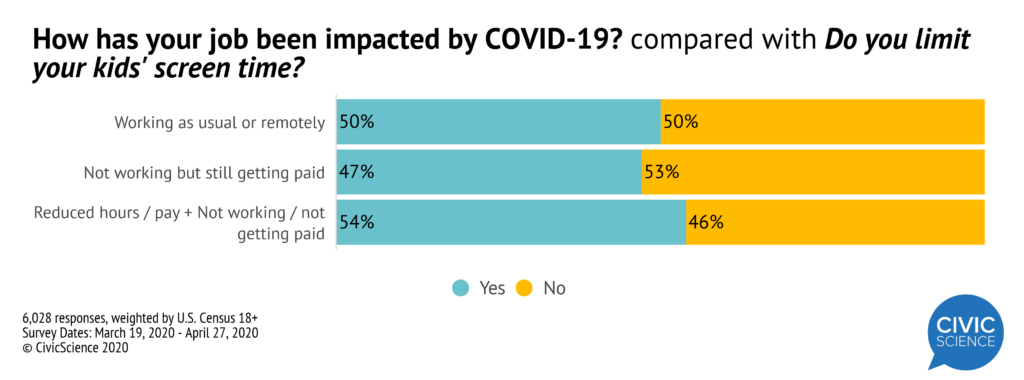It was sometime around the fifth interruption to a conference call that I decided that screens were no longer the enemy. Coloring books, toys, worksheets–all of these provide healthier distractions for kids, but all of these also require adult supervision to keep them on task, and none of them have the ability to transfix and hypnotize a child quite like Paw Patrol. I’d love my kids to be the artsy, crafty types, but in order to provide them that environment, I have to make money. In order to make money, I have to conduct conference calls without screaming interruptions. Ergo: screen time.
Working from home has presented a monstrous set of unique challenges for everyone (at least, everyone fortunate enough to be able to do it), but this is perhaps the one and only time that people with kids are allowed to lament a bit more. Usually, I balk at the concept: nobody forced us to have the kids, so we’re not allowed to complain about what they do or act extra burdened. However, now that we’ve got forced stay-at-home orders with zero childcare available? Sorry, yes, we’re now officially allowed to be just slightly more upset than non-parents (or parents with kids old enough to entertain themselves for longer than 20 minutes at a time).
I felt bad about the screen time at first. However, the beauty of the CivicScience dataset is that anytime I feel down on myself for my coping mechanisms during self-isolation, I can take a look and make sure I’m not alone. And, when it comes to screen time, all us parents appear to be in the same boat.
For the first time since we’ve been measuring it, parents who say they are not limiting their kids’ screen time are about to eclipse those that say they are. And the change has been rather abrupt, coinciding entirely with the social distancing edict issued by states across the country. How much of that is tied to an issue similar to my conference call conundrum? From the looks of it, a decent amount.
Parents who are working reduced hours or out of work are more likely to say that they are successfully limiting their kids’ screen time, likely because they have a little bit more time to remain attentive parents. The biggest reduction comes from parents of younger kids: 70% of parents are limiting screen time for kids 0-5 years old, but before the pandemic, that number was at 75%. Parents of 6- to 11-year olds showed a slightly lower rate of anxiety over reduced screen time, moving from 70% to 68% that are limiting it. It stayed flat for parents of 12- to 17-year olds, because once they get to be that age, they’re on their own (at least, I hope).
And of course, that means a big win for the first company you think of when you think of kids. Perhaps somewhat counterintuitively, the parents who have limited screen time were the dominant users of Disney+ prior to the social isolation age. (It’s worth noting, however, that this is not as counterintuitive as it seems: more affluent parents are the ones who are more likely to care about screen time, and they’re also the ones who can afford multiple streaming services.)
Now that the pandemic is on, though, Disney+ adoption is on the rise, and that’s thanks in large part to the growing share of parents like me who are throwing up their hands and surrendering to the time-tested babysitter in the living room.








